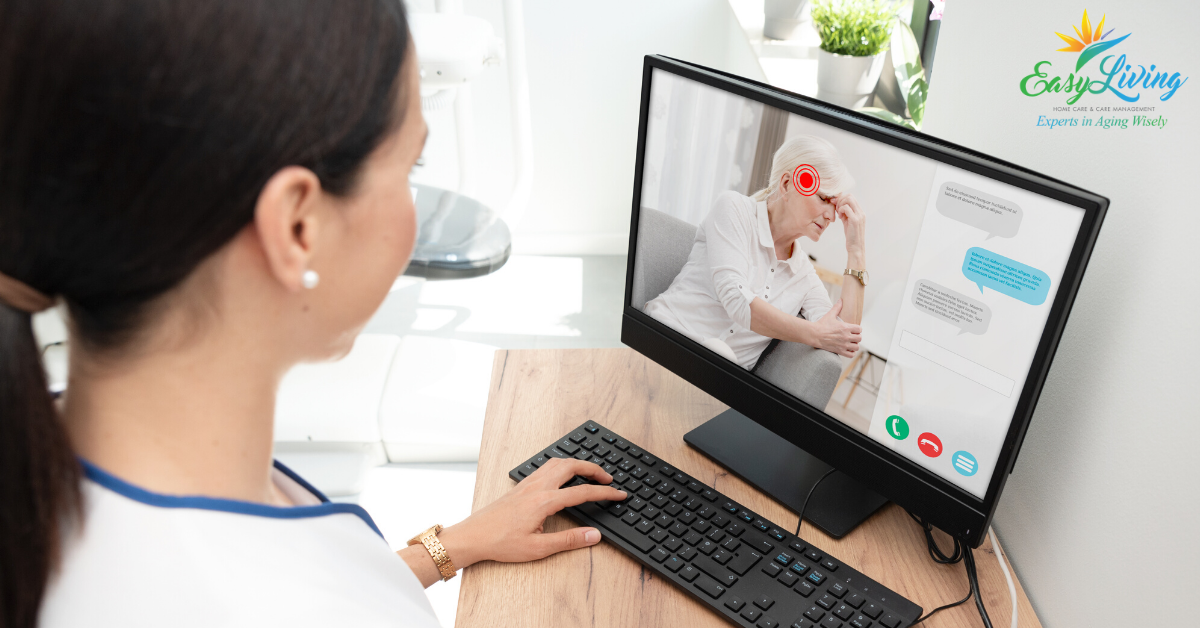Over the past decade, telehealth use has grown steadily. Before the COVID-19 pandemic, telehealth accounted for an estimated $3 billion of healthcare, with projections that it could expand to $175 billion by 2026. But, clearly, the pandemic sped up the adoption of telehealth.
Now, experts believe that $250 billion worth of care could shift to telehealth. This equals 20% of what Medicare, Medicaid, and private insurers spend on healthcare costs. Physicians and other health professionals are now seeing 50 to 175 times the number of patients via telehealth. Studies show that 46% of patients are now using telehealth to replace canceled in-person visits, up from just 11% of patients who used telehealth in 2019. And, 57% of providers view telehealth more favorably than before COVID-19 with 64% reporting they’re more comfortable using it.
What is telehealth and how can it benefit patients?
Telehealth can be a fairly broad term, used to define all medical services and health education delivered digitally. You might think of doctor’s visits and consultations to receive results and treatment plans. However, it can also include health monitoring, online education, and tools to manage chronic conditions. Some telehealth is delivered via portals or particularly connected devices, with visits being done by telephone or various video call options.
Research indicates that shifting care to telehealth could result in:
- 20% fewer emergency room visits
- 24% of office visits could be delivered virtually and an additional 9% delivered “near-virtually”
- 2% of all outpatient volume could be shifted to the home setting, with tech-enabled medical administration
For older patients who may have limited mobility and access to transportation as well as being especially vulnerable to contagious diseases, telehealth could be a lifesaver. And, of course, these patients also have the greatest number of conditions and treatments to manage. Many have spent large chunks of their time in and getting to and from medical appointments. But, while the benefits may be clear, telehealth comes with some challenges for older adults.
Will older adults be able to overcome the digital divide to benefit from telehealth?
A survey in May 2019 found one-third of adults 65+ say they’ve never used the internet, and half don’t have internet access at home. Of those who do use the internet, nearly half said they need someone’s help to set up or use a new digital device.
Meanwhile, on the positive side, the pandemic has caused more seniors to use technology to connect and get things done safely. Recent studies show more seniors than ever have adopted smartphones — 42%, according to Pew — and 67% say they have internet access. However, only a quarter of adults over 65 say they feel confident about using electronics to go online. Those who are part of communities, whether retirement communities, social groups, or supportive families, often gain access easier. They can get help going online and using the tools. And, they’re often motivated and able to educate themselves and find resources. But, divides remain, especially for poorer, more isolated seniors.
What You Can Do: Helping Organize a Telehealth Appointment for Your Elderly Parent
You can be the vital link to help your parents take advantage of telehealth.
Set up
First, start by helping them get set up with some of the basic technology they can use for access. Take a simple, straightforward approach to what they need. Don’t add all the bells and whistles. They usually just need internet access. So, you might set up an iPad or computer with one browser and bookmark or add shortcuts for the sites they will need. An iPhone might be the perfect device if they like to Facetime with grandkids and also want to be able to use it for telehealth. If they already have a device and are familiar with it, try to use that rather than starting over with something new. If they don’t, consider using what you know best so you can troubleshoot.
Find out what program(s) your parent’s providers use. Then, set that up for your parent and write out simple, step-by-step instructions. Demonstrate how to use it. Try it a few times. Be with them for the first visit when possible (or arrange a caregiver to be there) in case they experience connectivity issues.
Preparation
Help them prepare for the appointment. Download our printable telehealth checklist. This gives you an easy guide to use for each appointment so you don’t miss anything. First, it helps you ensure your parent has all the necessary appointment information including when and how to log in. It lists out any information they need to complete/prepare ahead. It has spots to gather the information that will make the appointment successful and to take notes. Finally, it helps you make sure you don’t miss follow up steps.
One key step outlined in the checklist is to organize your medical information. We suggest creating a medical file that you keep updated and make sure you’ve provided the latest information to your doctor. Medicare recipients should create a MyMedicare.gov profile and update their information. Our patient advocates can help you with all of these tasks and advise you on optimizing your parent’s healthcare.
By helping your parent prepare for the appointment, they will get the most out of it. If they’re new to telehealth and the technology feels a little overwhelming, they can easily lose track of questions they want to ask or things they need to tell the doctor. All of us will benefit from using this telehealth checklist, but especially older adults.
If you or a care manager normally attend appointments, find out if you can join virtually if you can’t be with them in person.
We’re here to help!
Our caregivers can assist with technology setup and appointments. We also offer care coaching and patient advocacy to ensure your loved one is getting the best care. Get assistance organizing medical records, connecting with the top providers, obtaining second opinions and navigating the healthcare system.

